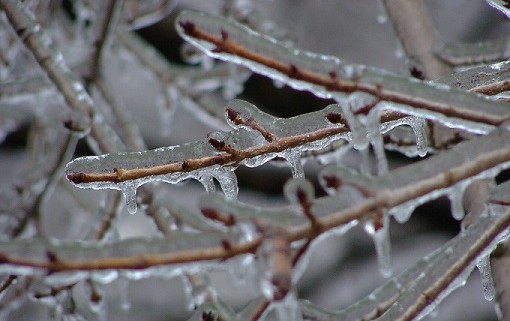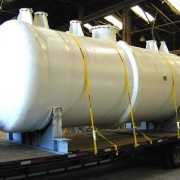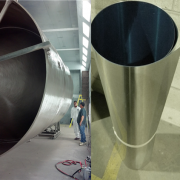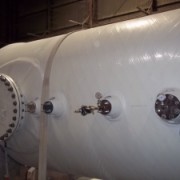Unique FRP Design Offers Solution To Flash Freezing
 Fiber Reinforced Polymers (FPR), or fiberglass, is an excellent construction material. Used throughout the world in a wide range of industrial and non-industrial applications, FRP boasts cost-effectiveness, design flexibility, dimensional stability, high strength-to-weight ratio, durability, and low maintenance costs—among other things.
Fiber Reinforced Polymers (FPR), or fiberglass, is an excellent construction material. Used throughout the world in a wide range of industrial and non-industrial applications, FRP boasts cost-effectiveness, design flexibility, dimensional stability, high strength-to-weight ratio, durability, and low maintenance costs—among other things.
FRP has gotten a lot of positive attention lately for other benefits; FRP is corrosion and abrasion resistant and smoke and flame retardant. An often glossed over advantage of FRP is its versatility; it can be made into nearly any shape—which comes in handy when designing for solutions that require a complex design, one that includes electronics, for example.
In the mining industry there are many types of corrosion that plague equipment and infrastructure, but in many cases it is characterized as corrosion enhanced by abrasion. FRP continues to gain in popularity as a material solution for pump and piping systems in the mining and mineral industries. In large part this is because FRP pipe can be formulated to resist abrasion and many types of corrosion; FRP will resist pitting, crevice, intergranular, galvanic, and cavitation types of corrosion, for example.
Equally important are the non-corrosive problems that exist in mining and plant operation. One such well-documented problem exists when conveying coal from stockpile to boiler or around the mine site during frigid winter months. Known throughout the industry as “flash freezing,” the problem begins anytime coal being transported or stored, picks up moisture, via snow or rain and comes into contact with metal that is at sub-freezing temperatures for extended periods of time. When wet or frozen coal comes into contact with steel or other alloys at sub-freezing temperatures an instantaneous bond is formed.
Flash freezing is a mining and plant operation problem that has been known to shut down production due to blocked conveyors, chutes and hoppers; a costly problem that in some cases requires pneumatic drilling to resolve. One company has designed what they call a “Freeze Protection System” which consists of FRP heating panels. The unique design incorporates a flat foil heating system, sewn into high quality woven glass and is encapsulated in a ¼” think lamination of FRP. Units (panels) are placed around the chute, hopper, or silo and provide heat and insulation—alleviating flash freezing.
This is just one example of how FRP design intelligence and ingenuity is helping to solve industrial problems. This example illustrates what is possible with FRP. There is no question that FRP technology is increasing, but the question remains—how will it be employed in the future and what capacity? In the case of “flash freezing” in the mining industry, what other ways can FRP be utilized to increase production? Could FRP products replace steel transport cars? Similarly, with a low coefficient of friction and good insulation properties could an FRP liner be used inside steel cars or dump tucks?
One thing is for certain; FRP is cost-effective material that continues to be used where other materials fall short. FRP is a juggernaut; it has the ability to withstand the harshest most extreme environments and has long unmatched life cycles. While some problems may be less pervasive than others, or beckon a more niche solution, there is no denying that there are real opportunities for FRP manufactures.
From mining and minerals, power generation, and chemical processing to pulp and paper, wastewater treatment and architectural—fiberglass is a durable construction material that has proven it’s worth, time and time again.











